There has been a recent backlash against sitting and rightly so. Sitting has been heralded as the new smoking. Sitting at a desk hunched over a keyboard, staring at a computer screen is terrible for you on so many levels. I won’t go into all of it because I feel it has been well documented. Suffice it to say that if you don’t work standing up by now, consider getting a standing desk as soon as possible.
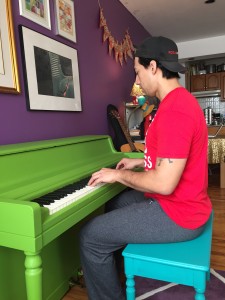
Sitting in a chair may be necessary at times, but eventually degrades your ankle, knee and hip mobility.
Clearly there are times when sitting in a chair is inextricably linked to the activity at hand like when you are driving your car or playing your piano. That being said, there are plenty of options for the sedentary beyond those instances where you can make a better choice about how you sit. The next time you sit, bypass the chair and go right to the floor. Sitting in a chair limits your range of motion and causes you to ultimately get tighter and shrivel up and die. Sitting on the floor actually requires greater range of motion and will help your joints stay supple and you’ll live a longer, healthier life.
Here are the four most common and productive ways to sit on the floor. If you haven’t been that close to the ground in a while, these can be challenging. Put your chairs up for sale on Craigslist and start reaping the benefits of sitting on the floor. It’s no accident that cultures that traditionally sit on the floor maintain their mobility throughout their lives.
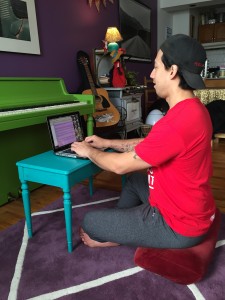
Sitting cross-legged increases the external rotation in your hips and can be very comfortable for long durations.
Sitting cross-legged. The classic way most people sit on the floor is still an excellent choice for the person that needs to sit comfortably. Whether you are working, eating or meditating, the cross-legged seat provides a stable position in the pelvis because it passively allows your hips to externally rotate and that creates a good platform for you spine to stack itself nice and tall.
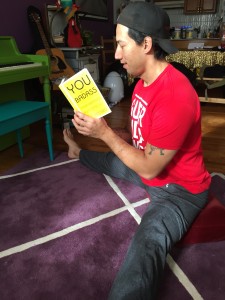
Sitting in a straddle is a great way to stretch your hamstrings while you multitask.
Sitting in a straddle. The next option is the straddle seat. For most deskbound types, this is extremely challenging due to the tightness of the hamstrings. Mulitple cushions might be necessary to elevate the butt high enough to allow you to sit up straight. Prolonged exposure to this position will cure your tight hamstring condition and make your cartwheels look amazing. Ask any highschool cheerleader or dancer and they will tell you they did their homework sitting in this position so they could stay flexible.
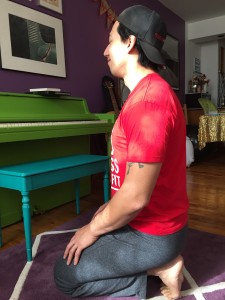
Sitting Seiza with the toes tucked under is a great relief for your plantar fasciitis and your tight calves.
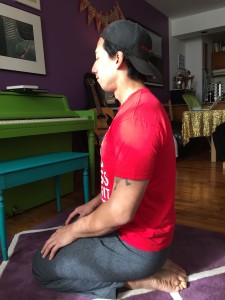
Sitting in Seiza with your toes pointed is a great stretch for your ankles and your tibialis anterior.
Sitting in Seiza (or Seza). The classic Japanese sitting position is called Seiza and common in all martial arts classes. Seiza is tough on Western people’s knees and ankles so start off by practicing on a soft surface with padding. If you’re knees are screaming, trying placing a pillow between your heels and your butt to raise yourself up a little higher. If you’ve been living an above-parallel life, Seiza will be a challenge but well worth it as it puts the knees and ankles into full flexion. Sitting in this position has two variations. I recommend alternating between having your toes tucked under and pointing your feet. Both positions are great and necessary stretches for the ankles. With the toes curled under and the feet in dorsiflexion, the plantar surface of the foot is stretched as well as the toes and the calves. This will prove difficult for women who wear high heels. With the toes pointed in plantar flexion, the top of the foot is stretched as well as the anterior side of the shin. This will often be very difficult for runners. Sitting in Seiza is a must for active people. You may not be able to sit like this for long, but a little bit every day will help with your lower leg mobility.
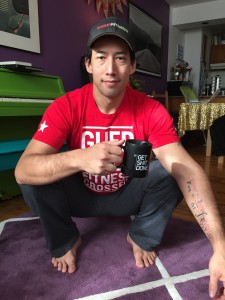
There is nothing a squat can’t fix.
Squat. Yes, you knew I would get around to saying you have to squat. However, today I don’t want you to squat for reps or weight. I simply want you to start squatting as a form of rest. Get into that squat when you’re waiting for the bus or going to the toilet. Get into your squat when you want to drink some coffee and send some text messages. Get comfortable down there. It’s not unreasonable to spend 10 minutes in a squat. Don’t fear the squat.
Spend more time on the floor and see how your mobility improves. Not everything has to be about doing more. Sometimes you just have to find a slightly better way to do the things your already doing. Instead of sitting in a chair, get down on the floor.






